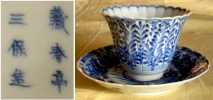A Unicorn sculpture from Nagabrahmasthana at Kalya near Nitte in Karkala taluk (India) has been found. It is said to very rare. Although it has been damaged it is still gorgeous. You can view it here: http://www.daijiworld.com/news/news_disp.asp?n_id=105370
This article inspired me to go and look at more depictions of Unicorns in History. During my search this is what I found:
The Council House, Bristol
Unicorn mosaic on a 1213 church floor in Ravenna
Wild Women with Unicorn, c. 1500–1510
Medal of Cecilia Gonzaga by Pisanello, 1447
The Unicorn Is Penned, Unicorn Tapestries, c. 1495–1505
Maiden with Unicorn, tapestry, 15th century
The gentle and pensive maiden has the power to tame the unicorn, fresco, probably by Domenico Zampieri, c. 1602
St Justina with the Unicorn c. 1530
http://www.all-art.org/early_renaissance/moretto1.html
I hope everyone enjoyed these amazing depictions! Makes you wish you had a Unicorn right?
All picture have no copyright regulations unless otherwise stated.
Source: http://www.daijiworld.com/news/news_disp.asp?n_id=105370





























